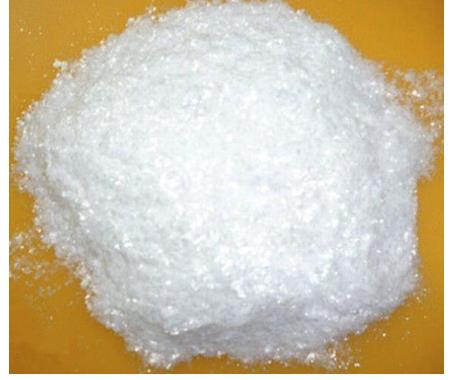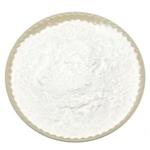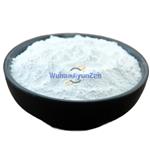Polymyxin B Sulfate: A Critical Antibiotic for Combating Multidrug-Resistant Gram-Negative Bacteria
Nov 18,2024
Brief introduction
Polymyxin B sulfate is a group of polypeptide antibiotics produced by Bacillus polymyxa. Polymyxin B sulfate and E are used for medicinal purposes, and their sulfates are commonly used. White or almost white powder. Almost odorless. Sensitive to light. Has hygroscopicity. The antibacterial spectrum and clinical application of polymyxin B sulfate are similar to polymyxin E. It has inhibitory or bactericidal effects on gram-negative bacteria such as Escherichia coli, Pseudomonas aeruginosa, Escherichia coli, Klebsiella pneumoniae, Acinetobacter baumannii, Bordetella pertussis, and Shigella dysenteriae[1].

Figure 1 Characteristics of Polymyxin B sulfate
Drug interactions
Avoid co-administration with drugs that cause significant damage to the kidneys, skeletal muscle relaxants, aminoglycoside antibiotics, anesthetics with significant muscle relaxant effects (such as enflurane), and do not use quinine, magnesium, etc. intravenously at the same time. Combining Polymyxin B sulfate with sulfonamide drugs, rifampicin, semi-synthetic penicillin, etc. is used to treat severe drug-resistant gram-negative bacterial infections, and the effect is better than using it alone.
Metabolism in the body
Sulfate polymyxin B and sulfate polymyxin E are mainly excreted through the kidneys. Sulfate polymyxin B is excreted slowly and has a lag time after entering the body. Within the first 12 hours after injection, only 0.1% of the medication is excreted from the urine, but continued use increases urine excretion, with 60% of the total recoverable amount in the urine; Polymyxin E sodium methanesulfonate is rapidly excreted, with 40% excreted in the urine 8 hours after injection. When renal dysfunction occurs, the elimination half-life of these two drugs is significantly prolonged, and the dosage must be reduced. The elimination half-life of polymyxin B sulfate is 6 hours, and the half-life of polymyxin E methane sulfonate sodium is 1.6-2.7 hours. Neither of these drugs can enter the pleura, ascites, aqueous humor, or cerebrospinal fluid in the body. Intrathecal administration is necessary when used to treat Gram-negative bacterial meningitis.
Application
1. Pulmonary infection
Polymyxin B sulfate has a significant effect on the treatment of lung infections caused by gram-negative bacteria such as Pseudomonas aeruginosa and Escherichia coli. In cases where other antibiotics have poor therapeutic effects, Polymyxin B sulfate is often used as an effective alternative drug.
2. Urinary tract infection
Polymyxin B sulfate also exhibits strong antibacterial effects in the treatment of urinary tract infections caused by drug-resistant strains. Combining other treatment methods such as urinary tract cleaning and hydration can effectively control infections and alleviate patient symptoms.
3. Sepsis
When sepsis patients develop resistance to other antibiotics or have poor treatment outcomes, Polymyxin B sulfate can play an important role. By inhibiting bacterial growth, Polymyxin B sulfate helps to control the further development of sepsis and improve the survival rate of patients.
4. Other infections
Polymyxin B sulfate can also be used to treat other infectious diseases caused by Gram-negative bacteria, such as abdominal infections, and skin infections.
Safety and Precautions
Renal dysfunction: Polymyxin B sulfate is mainly excreted through the kidneys, and individuals with renal dysfunction are prone to drug accumulation, leading to renal toxicity. Therefore, when using Polymyxin B sulfate, close attention should be paid to renal function and the drug dosage should be adjusted promptly.
Neurotoxicity: Polymyxin B sulfate has certain neurotoxicity, which may cause symptoms such as muscle spasms and consciousness disorders in patients. During use, the patient's nervous system performance should be closely observed. If there are any abnormalities, the medication should be stopped promptly and corresponding treatment measures should be taken.
Drug interactions: Simultaneous use of Polymyxin B sulfate with other drugs may result in interactions that can affect therapeutic efficacy. Therefore, when using Polymyxin B sulfate, it should be avoided to use it together with other drugs. If necessary, it should be used under the guidance of a doctor.
Drug resistance issue: Long-term and extensive use of Polymyxin B sulfate may lead to the emergence of drug-resistant strains. Therefore, in the process of use, the indications and dosage of the medication should be strictly controlled to avoid abuse.
References:
[1] M E EVANS R P R D J Feola. Polymyxin B sulfate and colistin: old antibiotics for emerging multiresistant gram-negative bacteria.[J]. Annals of Pharmacotherapy, 1999, 33 9. DOI:10.1345/aph.18426.
[2] JAMES J CORRIGAN JR. J F K. Effect of Polymyxin B Sulfate on Endotoxin Activity in a Gram-Negative Septicemia Model[J]. Pediatric Research, 1979, 13 1. DOI:10.1203/00006450-197901000-00011.
- Related articles
- Related Qustion
- Applications and Side Effects of Polymyxin B sulfate Ear Drops Jun 24, 2025
Polymyxin B sulfate ear drops is a combination of neomycin, polymyxin B and hydrocortisone used to treat ear infections and to help relieve redness, irritation and discomfort associated with certain ear disorders.
- Indications and side effects of Polymyxin B sulfate in combination with Trimethoprim Aug 15, 2024
Polymyxin B sulfate and Trimethoprim is an ophthalmic preparation, belonging to the antibiotic class of drugs, which in combination can be used to treat eye infections, including acute bacterial conjunctivitis and blepharoconjunctivitis.
- Description, clinical application and bioactivities of polymyxin B sulfate Jul 25, 2022
Common preparations of polymyxin B sulfate primarily include injections. It is used to resist the infection caused by gram-negative bacilli, mainly Pseudomonas aeruginosa.
Supplementation with pyridoxal 5'-phosphate monohydrate can synthesize neurotransmitters such as dopamine and serotonin, maintaining a healthy nervous system.....
Nov 4,2025Biochemical EngineeringCyanuric acid is known as a stabilizer for the chlorine in swimming pools exposed to sunlight. Cyanuric acid forms a weak bond with free chlorine in the pool water, protecting it from the sun’s ultraviolet rays to reduce chlorine loss.....
Oct 8,2024Organic AcidsPolymyxin B sulfate
1405-20-5You may like
- Synthesis and Pharmaceutical Applic....
Nov 24, 2025
- Properties and Applications of the 2-Adamantanol
Nov 24, 2025
- Lithium Difluorophosphate (LiDFP) A....
Nov 21, 2025
Polymyxin B sulfate manufacturers
- Polymyxin B sulfate
-

- $1.00 / 1KG
- 2025-11-24
- CAS:1405-20-5
- Min. Order: 1KG
- Purity: 6500IU/MG(on dried basis),USP41
- Supply Ability: 50kg/month
- Polymyxin B sulfate
-

- $1.00 / 1g
- 2025-11-24
- CAS:1405-20-5
- Min. Order: 1g
- Purity: 0.99
- Supply Ability: 20 tons
- Polymyxin B Sulfate
-

- $5.00/ KG
- 2025-11-21
- CAS:1405-20-5
- Min. Order: 0.10000000149011612KG
- Purity: 99% hplc
- Supply Ability: 5000kg






